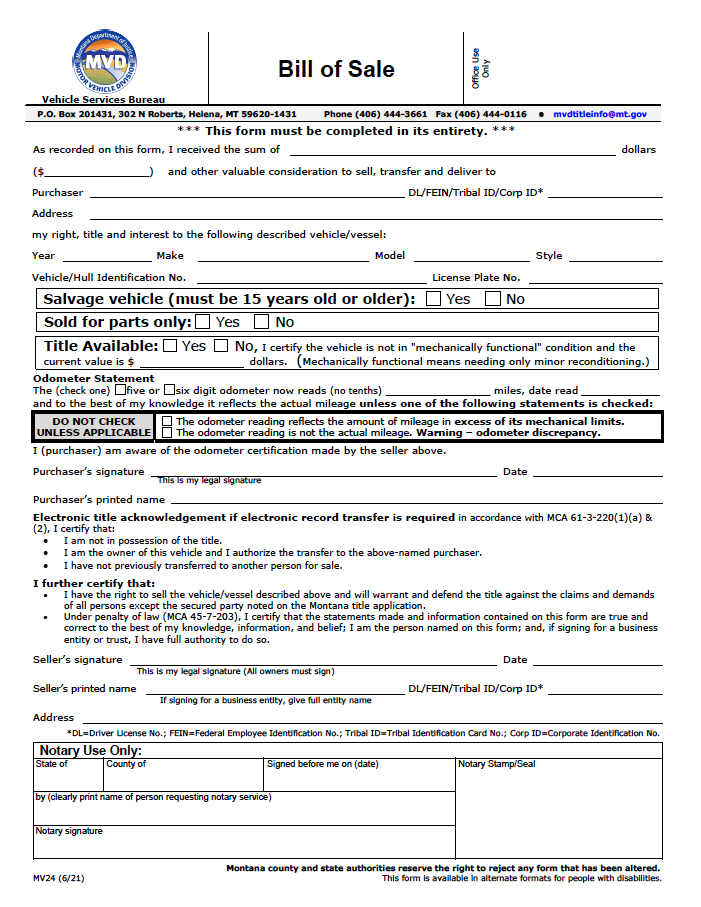Montana Motor Vehicle Bill of Sale Form
A Montana motor vehicle bill of sale form confirms payment was made regarding the purchase of a car or truck.
When filling out the form, the parties must include the sale date, the purchase amount, and the car’s year, make, model, style, and vehicle identification number (VIN). The parties must enter their full name, driver’s license number, address, printed name, date, and signature.
|
What is a Montana Car Bill of Sale?
A Montana car bill of sale accompanies other sales documents, such as the title, when two (2) parties transfer ownership of an automobile. The person completing the form must enter the odometer reading at the time of the deal (or note if a discrepancy exists). They must also disclose if the car is a salvage vehicle, sold for parts, and if the title is available. By entering their signature, they confirm that they are the rightful owner of the car and can legally sell it.
Before signing, a notary public must check the buyer and seller’s photo identifications (IDs) and validate their driver’s license numbers. If this information proves valid, the certified individual notarizes the form by signing and providing their official stamp or seal of approval.
How to Register a Car in Montana (3 Steps)
Step 1 – Insurance
All drivers in Montana must have an active insurance policy on their vehicle (§ 61-3-301). A copy of the plan must stay in a safe storage place within the car. Law enforcement can demand it upon request, and the driver must have it in case they get into an accident.
Step 2 – Title & Registration
The owner must complete the title and registration application at their nearby county treasurer’s office. Dealers will take care of this process if purchased through their in-state office.
Bring the Following:
|
Step 3 – Renew
A Montana vehicle registration lasts for one (1) or two (2) years, depending on the selection during titling and registration. Permanent registrations do not require renewal. Re-application can occur online or with the owner’s current county treasurer.
